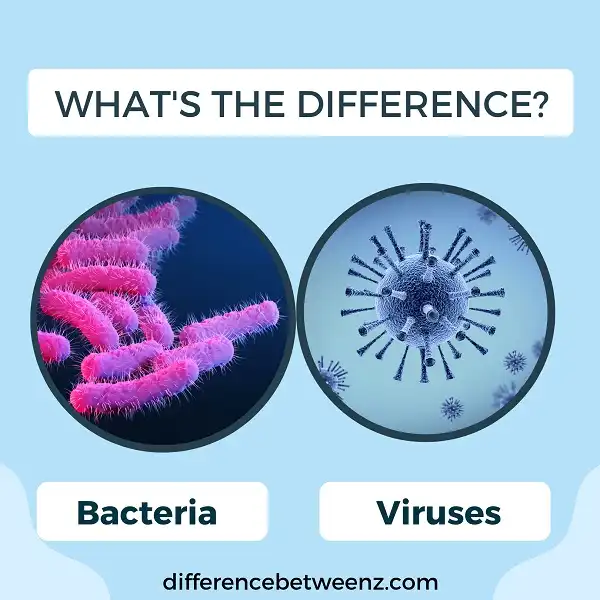Bacteria vs Viruses
Difference between bacteria and viruses;- The world does not only limit what we can observe, beyond our view there is a whole universe of living organisms and agents that in some cases may even affect our life and health; Since they can be cause of diverse diseases. This post is all about the difference between bacteria and viruses. Keep reading to learn the difference.
Difference between bacteria and viruses
Today we will see the difference that exists between organisms like the bacteria that can cause different diseases and the viruses; which can also be very harmful to our health. So before understanding the difference between bacteria and viruses, let’s discuss both of them individually first.
Bacteria
Bacteria are living organisms, as are plants and animals. They are very small and measure a few microns in size (micro = 0.001 mm). They are different from other cellular forms, since they have no nuclei. Many bacteria inhabit our skin, mouth and intestine; Helping in the process of digestion and keeping regulated the number of bad bugs in our organism.
Most bacteria are made up of a ring of DNA, surrounded by a cellular machinery, contained in a fat membrane. Compared to viruses, bacteria are much larger. They are intercellular organisms that can have different forms: Coco = spherical shape, Bacillus = bar form, Spirilo = spiral form.
Antibiotics are used to treat diseases caused by bacteria. Bacteria can cause diseases like: cholera, Lyme disease, tuberculosis, salmonella, diphtheria, tetanus, E. coli, leprosy. Bacteria extract their energy from some essential sources like humans, sugars, proteins and fats. They can be transmitted by direct contact with an infected person, through contaminated water or food (E. coli, Salmonella), dirty objects and infected animals. Bacteria reproduce by binary fusion, that is, they divide into two cells. Some move in the middle using a structure known as flagellum.
Virus
A virus is a genetic material or mobile agent that remains enclosed in a protein or fat shell. Viruses are smaller than bacteria and range in size from 0.1 to 0.3 microns. They were discovered a little before 1900.
The discussion about viruses revolved around whether or not they are considered living beings, but as it is now known that they are only DNA and RNA molecules; that is, they are not cells, and they are not considered living beings.
Viruses are but a small piece of genetic material surrounded by a thin layer of protein, although some also have a thin wrap and fatty acids. This protein envelope is known as a capsid.
Viruses, unlike bacteria, are usually only injurious to health. Among the diseases caused by viruses can be mentioned: influenza, HIV / AIDS, hepatitis, measles, herpes, chickenpox, smallpox, poliomyelitis, Ebola; among other.
Viruses affect both humans and animals. They are transmitted by air and by contact with contagious persons or objects. Viruses get into the cells and feed on them. Viruses have no flagella or other structure, just like bacteria; therefore, they cannot move on their own.
Key differences between viruses and bacteria
- Viruses are not living things, but bacteria are.
- Bacteria can be useful or not for health, but viruses are usually always harmful.
- Viruses are smaller than bacteria.


